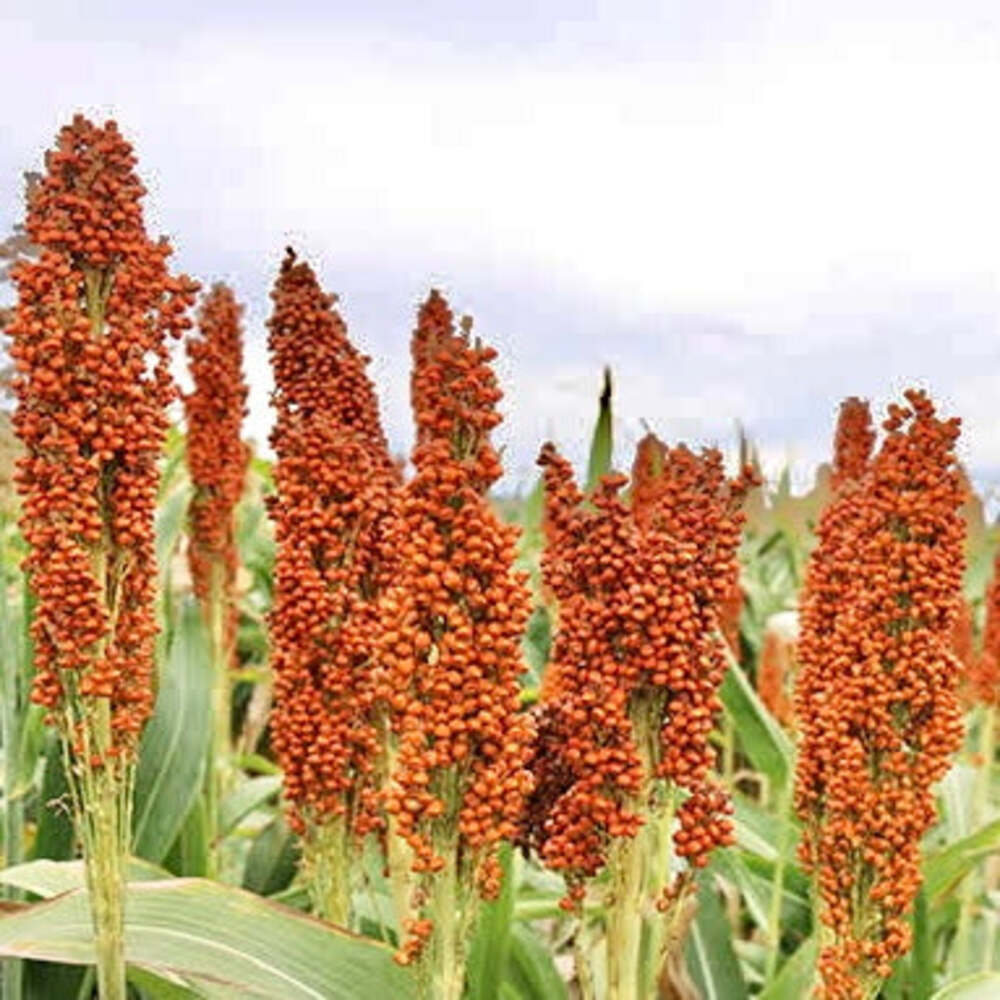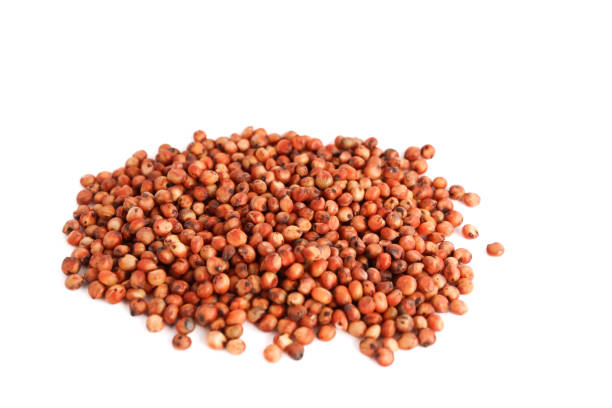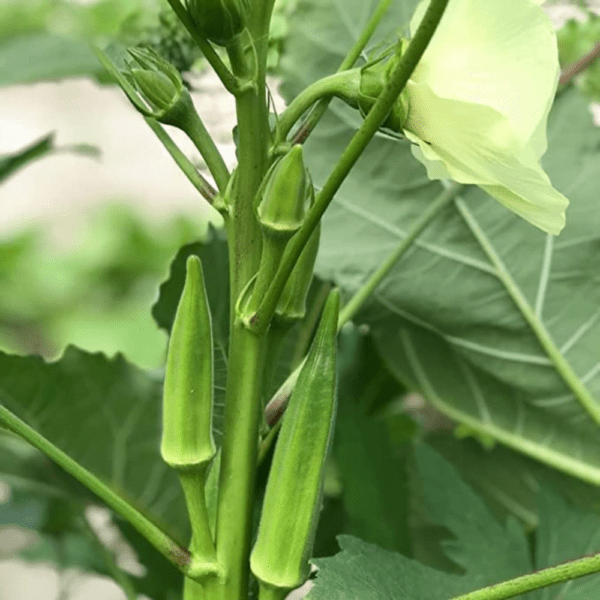How to Grow Native Hill Red Sorghum (Sivappu Cholam) from Seeds Organically: A Complete Guide
Native Hill Red Sorghum, also known as Sivappu Cholam in Tamil, is an ancient, hardy grain that has been a staple in traditional farming for generations. Rich in fiber, iron, protein, and antioxidants, Red Sorghum is a nutritious and drought-tolerant crop that thrives in diverse conditions, making it ideal for organic farming and sustainable agriculture. Whether you are looking to grow sorghum for food, fodder, or for its health benefits, Native Hill Red Sorghum is a fantastic choice.
In this guide, we will walk you through how to grow Native Hill Red Sorghum from Native Hill Red Sorghum / Sivappu Cholam Seeds organically. If you’re looking for high-quality, non-certified Sivappu Cholam seeds, this guide will show you how to get started and why growing sorghum is a smart investment for your health and your land.
Why Grow Native Hill Red Sorghum (Sivappu Cholam) Organically?
Native Hill Red Sorghum is a fantastic choice for those looking to adopt organic farming practices. Here’s why:
- Drought-Tolerant: Sorghum is a hardy grain that thrives in dry, arid conditions, making it an ideal crop for areas with limited rainfall or unpredictable weather patterns.
- Nutrient-Rich: Sivappu Cholam is packed with fiber, iron, protein, and antioxidants. It’s a great addition to your diet, providing energy while supporting heart health, digestion, and bone health.
- Minimal Input: Red Sorghum is well-suited for organic farming because it requires little water, minimal fertilizers, and no pesticides, making it a sustainable crop for the long term.
- Improves Soil Health: Growing sorghum helps enhance soil structure by preventing erosion and supporting the overall health of the land. It also helps with nitrogen fixation in the soil, which is beneficial for future crops.
Step-by-Step Guide to Growing Native Hill Red Sorghum Organically
1. Select the Right Location for Growing Sivappu Cholam
Sorghum grows best in areas with warm temperatures and well-drained soil. Consider these factors when selecting your growing site:
- Temperature: Native Hill Red Sorghum thrives in warm climates with temperatures between 25°C to 40°C(77°F to 104°F). Sorghum is heat-tolerant, making it a perfect crop for tropical and semi-arid regions. Native Hill Red Sorghum / Sivappu Cholam Seeds
- Sunlight: Choose a location that receives full sunlight, as sorghum requires at least 6-8 hours of sunlight per dayfor proper growth. Native Hill Red Sorghum / Sivappu Cholam Seeds
- Soil Type: Sorghum prefers well-drained soil that is loamy or sandy. It can tolerate poor soils but performs best in soils with a neutral pH (6.0–7.5). Native Hill Red Sorghum / Sivappu Cholam Seeds
2. Prepare the Soil for Planting Sivappu Cholam
Proper soil preparation is key to ensuring your Native Hill Red Sorghum grows vigorously:
- Soil Fertility: Since sorghum requires minimal fertilizers, you can enrich the soil by mixing in organic compost or well-rotted manure before planting. This will boost the nutrient levels of the soil.
- Tillage: Loosen the soil to a depth of around 3-4 inches to help the seeds establish roots quickly. If you’re planting on hard soil, consider creating raised beds to improve drainage.
- Weed Control: Weeds can compete with sorghum for nutrients and water. Removing weeds before planting and using mulch can help control their growth. Native Hill Red Sorghum / Sivappu Cholam Seeds
3. Planting Native Hill Red Sorghum Seeds
Sowing Sivappu Cholam seeds is simple and easy. Follow these steps for optimal results:
- When to Plant: The ideal time to plant Native Hill Red Sorghum is during the summer months or just after the monsoon, once the soil temperature is consistently warm (around 25°C or 77°F).
- Seed Depth: Sow the Native Hill Red Sorghum / Sivappu Cholam Seeds about 1-2 inches deep into the soil. This depth will protect the Native Hill Red Sorghum / Sivappu Cholam Seeds from drying out while ensuring proper germination.
- Row Spacing: Space the Native Hill Red Sorghum / Sivappu Cholam Seeds about 8-10 inches apart in rows. Leave 12-18 inches between rows to give the plants enough room to grow.
- Seed Rate: For optimal growth, sow around 8-10 kg of seeds per acre. If you’re planting in a smaller garden, adjust the number of Native Hill Red Sorghum / Sivappu Cholam Seeds based on your space. Native Hill Red Sorghum / Sivappu Cholam Seeds
4. Watering and Moisture Management
While Native Hill Red Sorghum is drought-tolerant, it does require some care in the early stages of growth:
- Initial Watering: Water the seeds immediately after planting to keep the soil moist. Light watering is recommended, as excessive moisture can hinder seed germination.
- Post-Germination: Once the seedlings are established, reduce watering. Sorghum can survive with little water, but it will benefit from occasional watering during periods of dry weather.
- Avoid Overwatering: Ensure that the soil is not waterlogged. Sorghum prefers deep watering but doesn’t like sitting in wet soil, which can lead to root rot.
5. Organic Fertilization
Sorghum thrives with organic inputs. Here’s how you can fertilize your Native Hill Red Sorghum organically:
- Compost: Applying organic compost or vermicompost around the base of the plants can provide slow-release nutrients, promoting healthy growth.
- Green Manuring: Planting leguminous crops like peas or beans alongside sorghum can improve soil nitrogen levels through natural nitrogen fixation. Native Hill Red Sorghum / Sivappu Cholam Seeds
- Organic Fertilizers: If you notice any signs of nutrient deficiencies, you can use organic liquid fertilizers like fish emulsion or seaweed extract to give your plants an extra boost.
6. Weed and Pest Control
Controlling weeds and pests organically is essential for maintaining a healthy crop:
- Mulching: Mulch around your plants using straw, grass clippings, or leaves to keep weeds down and conserve soil moisture. Organic mulch also breaks down over time, improving soil health.
- Manual Weeding: Regularly pull out weeds by hand or use a hoe to prevent them from competing with your sorghum plants for nutrients and space.
- Natural Pest Control: Sorghum is generally pest-resistant, but if you notice aphids, grasshoppers, or caterpillars, use neem oil or organic insecticidal soap to manage them.
7. Harvesting Native Hill Red Sorghum
Sivappu Cholam typically takes around 4-5 months to mature. Here’s how to determine the best time to harvest:
- When to Harvest: Your Native Hill Red Sorghum is ready to harvest when the grains turn a golden-brown color, and the seeds feel hard to the touch. The stalks will become dry, and the leaves will turn yellow.
- Harvesting Method: Cut the mature sorghum stalks with a sickle or harvesting knife. Allow the stalks to dry in the sun for a few days before threshing the grains.
- Threshing: Once the sorghum is fully dried, separate the grains from the stalks by hand or using a manual thresher.
Why Choose Our Native Hill Red Sorghum Seeds?
If you’re looking to grow Native Hill Red Sorghum (Sivappu Cholam) organically, our high-quality seeds are a great option for your garden or farm. Here’s why:
- Organic Growing: Our seeds are perfect for organic farming. With minimal care and input, you can grow your own nutritious sorghum crop without relying on synthetic chemicals.
- Drought-Resistant: Native Hill Red Sorghum is highly drought-tolerant and ideal for dry regions, helping you grow food even in challenging weather conditions.
- Nutrient-Packed: Sorghum is an excellent source of fiber, iron, and protein and is a great addition to your diet or livestock feed.
- Low Maintenance: This hardy grain requires little attention, making it an excellent choice for sustainable, low-input farming.
- Great for Traditional and Modern Cooking: Whether you want to use the grain in traditional recipes or as a gluten-free alternative in modern cooking, Sivappu Cholam is a versatile and healthy grain.
Conclusion
Growing Native Hill Red Sorghum (Sivappu Cholam) organically is a simple, sustainable, and rewarding practice. Whether you’re cultivating it for personal use, selling it locally, or adding it to your livestock feed, this drought-resistant grain offers a multitude of benefits. With minimal care and the right growing conditions, you can enjoy a successful harvest of nutritious sorghum.
Order our Native Hill Red Sorghum seeds today and start growing this powerful, sustainable crop in your garden or farm. Embrace the benefits of organic farming with **Sivappu Chol








Reviews
There are no reviews yet.